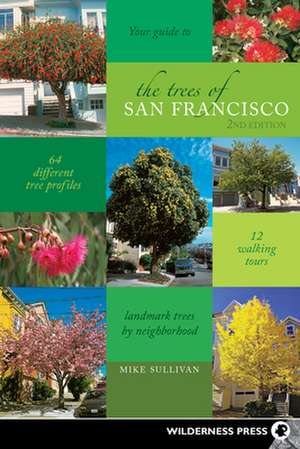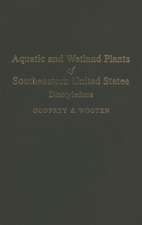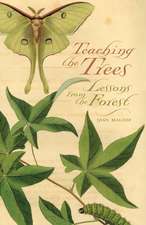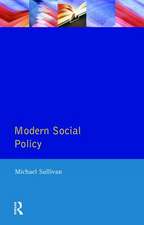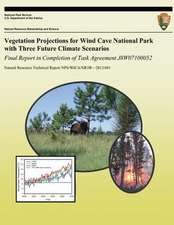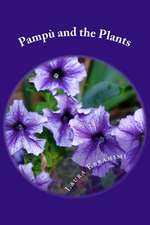The Trees of San Francisco
Autor Michael Sullivanen Limba Engleză Paperback – 18 noi 2013
Preț: 110.73 lei
Nou
Puncte Express: 166
Preț estimativ în valută:
21.19€ • 22.04$ • 17.49£
21.19€ • 22.04$ • 17.49£
Carte disponibilă
Livrare economică 24 martie-07 aprilie
Preluare comenzi: 021 569.72.76
Specificații
ISBN-13: 9780899977430
ISBN-10: 089997743X
Pagini: 160
Ilustrații: Color photos throughout, Maps
Dimensiuni: 152 x 226 x 10 mm
Greutate: 0.35 kg
Ediția:Second Edition
Editura: Wilderness Press
ISBN-10: 089997743X
Pagini: 160
Ilustrații: Color photos throughout, Maps
Dimensiuni: 152 x 226 x 10 mm
Greutate: 0.35 kg
Ediția:Second Edition
Editura: Wilderness Press
Cuprins
Preface
Introduction
The Trees
Walking Tours
The Best Trees
Selected Bibliography
Index of Trees by Common Name
Index of Trees by Scientific Name
Introduction
The Trees
Walking Tours
The Best Trees
Selected Bibliography
Index of Trees by Common Name
Index of Trees by Scientific Name
Notă biografică
Mike Sullivan grew up in the Adirondack Mountains of Upstate New York, where his love of trees began. He graduated from Williams College in 1981 and the University of Michigan Law School in 1984, when he moved to San Francisco to become a corporate lawyer. In the early 1990s he joined local tree planting organization called Friends of the Urban Forest as a volunteer, later serving on the group’s board of directors for 12 years and as President of the Board for several years. Sullivan served on the San Francisco Urban Forestry Council from 2003-2005, and on the City’s Recreation and Park Commission from 2007-2010. He lives in San Francisco’s Parnassus Heights neighborhood with his husband Paul and 9 year old son Joseph, who was born the same week the family planted the now 25 ft. soapbark tree (Quillaja saponaria) in front of the family home.
Extras
The Trees
Acacia baileyana (Bailey’s acacia)
This Australian native is the harbinger of spring in San Francisco. It is the earliest tree to flower, putting out brilliant yellow blossoms in January. (As a native of northern New York, I still find it jarring to associate January with spring.) The tree is popular for its feathery, blue-gray foliage, although the ‘Purpurea’ variety has lavender new growth. Bailey’s acacia is one of the fastest growing San Francisco street trees, quickly reaching 20–30 feet in both height and width. Like most fast-growing trees, however, it is short lived, rarely surviving longer than 25 years. Known as Cootamundra wattle in Australia, this plant is native to a small area near the town of Cootamundra in New South Wales. It is a woody shrub in the wild, but it can be trained to grow as a tree.
LOCATION: 1201 Shrader St./Grattan St. in Cole Valley; also at 236 Ashbury St./Fell St. near the Golden Gate Park panhandle
Acacia melanoxylon (blackwood acacia)
One of the largest of San Francisco’s street trees (to 40 feet in height, much higher under ideal conditions), blackwood acacia is also one of the most common—it was planted heavily throughout the city during the 1960s and 1970s, so many large, mature specimens are now found citywide. The tree is evergreen, with dark brown bark and dense gray-green “leaves” 3–5 inches long that actually are not leaves but enlarged leaf stalks called phyllodes. (Botanists believe that phyllodes are a moisture-preserving adaptation to a dry climate.) In February and March, the tree produces an abundance of globular, pale yellow flowers that put out a great deal of pollen.
Blackwood acacia is well adapted to San Francisco’s coastal climate and will grow (rapidly) almost anywhere on city streets, as it is not afraid of sidewalks. In fact, just the opposite—this tree’s aggressive roots will crack and lift sidewalks, which helps explain why in recent years it has been planted less frequently. Nevertheless, this is a good choice where a large, fast-growing tree is desired.
Blackwood acacia is native to the forests of Tasmania and southeastern Australia. It has always been an important timber tree in its native zone—the tree’s hard wood made strong boomerangs, clubs and shields for Australia’s aboriginal people.
LOCATION: 1 Northwood/Montecito in Westwood Park; also at 740 Masonic Ave./Hayes St.
Aesculus californica (California buckeye)
This is one of the few trees in this book that is a true San Francisco native, existing within the city limits before the arrival of Europeans. The California buckeye is one of the state’s most beautiful native trees, growing to 20 feet in height on wind-protected sites in the dry slopes and canyons of the coastal range and Sierra foothills. The tree produces showy long-lasting clusters of white flowers in May and June. One or two pear-shaped fruits are formed on each flower cluster, and inside each fruit’s leathery jacket is a seed with a shiny brown coat. The tree’s light green leaves are divided into five to seven leaflets, which drop in July (an adaptation to long, dry summers) unless summer water is provided.
Native Americans crushed this tree’s poisonous seeds and added them to dammed-up streams to stupefy fish, making them easy to catch. (Today it is not unusual to find colonies of California buckeyes growing around old Indian campgrounds.) The ‘49ers, among the first Europeans to see this tree, referred to it as a California pear.
Perhaps because of its spreading form, the California buckeye is rarely planted as a street tree in San Francisco, with its narrow setbacks. You can view a large and spectacular specimen in a yard at 2694 McAllister St., near the University of San Francisco campus. The tree was scheduled for removal in 1999 in connection with new construction on the lot, but after a neighborhood outcry, plans for the house were changed to build around, and preserve, the tree. As part of the settlement, the property owner signed a “tree easement” with Friends of the Urban Forest, protecting the tree from future removal – making this the only tree in the city protected by contract.
Acacia baileyana (Bailey’s acacia)
This Australian native is the harbinger of spring in San Francisco. It is the earliest tree to flower, putting out brilliant yellow blossoms in January. (As a native of northern New York, I still find it jarring to associate January with spring.) The tree is popular for its feathery, blue-gray foliage, although the ‘Purpurea’ variety has lavender new growth. Bailey’s acacia is one of the fastest growing San Francisco street trees, quickly reaching 20–30 feet in both height and width. Like most fast-growing trees, however, it is short lived, rarely surviving longer than 25 years. Known as Cootamundra wattle in Australia, this plant is native to a small area near the town of Cootamundra in New South Wales. It is a woody shrub in the wild, but it can be trained to grow as a tree.
LOCATION: 1201 Shrader St./Grattan St. in Cole Valley; also at 236 Ashbury St./Fell St. near the Golden Gate Park panhandle
Acacia melanoxylon (blackwood acacia)
One of the largest of San Francisco’s street trees (to 40 feet in height, much higher under ideal conditions), blackwood acacia is also one of the most common—it was planted heavily throughout the city during the 1960s and 1970s, so many large, mature specimens are now found citywide. The tree is evergreen, with dark brown bark and dense gray-green “leaves” 3–5 inches long that actually are not leaves but enlarged leaf stalks called phyllodes. (Botanists believe that phyllodes are a moisture-preserving adaptation to a dry climate.) In February and March, the tree produces an abundance of globular, pale yellow flowers that put out a great deal of pollen.
Blackwood acacia is well adapted to San Francisco’s coastal climate and will grow (rapidly) almost anywhere on city streets, as it is not afraid of sidewalks. In fact, just the opposite—this tree’s aggressive roots will crack and lift sidewalks, which helps explain why in recent years it has been planted less frequently. Nevertheless, this is a good choice where a large, fast-growing tree is desired.
Blackwood acacia is native to the forests of Tasmania and southeastern Australia. It has always been an important timber tree in its native zone—the tree’s hard wood made strong boomerangs, clubs and shields for Australia’s aboriginal people.
LOCATION: 1 Northwood/Montecito in Westwood Park; also at 740 Masonic Ave./Hayes St.
Aesculus californica (California buckeye)
This is one of the few trees in this book that is a true San Francisco native, existing within the city limits before the arrival of Europeans. The California buckeye is one of the state’s most beautiful native trees, growing to 20 feet in height on wind-protected sites in the dry slopes and canyons of the coastal range and Sierra foothills. The tree produces showy long-lasting clusters of white flowers in May and June. One or two pear-shaped fruits are formed on each flower cluster, and inside each fruit’s leathery jacket is a seed with a shiny brown coat. The tree’s light green leaves are divided into five to seven leaflets, which drop in July (an adaptation to long, dry summers) unless summer water is provided.
Native Americans crushed this tree’s poisonous seeds and added them to dammed-up streams to stupefy fish, making them easy to catch. (Today it is not unusual to find colonies of California buckeyes growing around old Indian campgrounds.) The ‘49ers, among the first Europeans to see this tree, referred to it as a California pear.
Perhaps because of its spreading form, the California buckeye is rarely planted as a street tree in San Francisco, with its narrow setbacks. You can view a large and spectacular specimen in a yard at 2694 McAllister St., near the University of San Francisco campus. The tree was scheduled for removal in 1999 in connection with new construction on the lot, but after a neighborhood outcry, plans for the house were changed to build around, and preserve, the tree. As part of the settlement, the property owner signed a “tree easement” with Friends of the Urban Forest, protecting the tree from future removal – making this the only tree in the city protected by contract.
Descriere
The Trees of San Francisco introduces readers to the rich variety of trees that thrive in San Francisco’s unique conditions. San Francisco’s cool Mediterranean climate has made it home to interesting and unusual trees from all over the world – trees as colorful and exotic as the city itself.
This new guide combines engaging descriptions of sixty-five different trees with color photos that reflect the visual appeal of San Francisco. Each page covers a different tree, with several paragraphs of interesting text accompanied by one or two photos. Each entry for a tree also lists locations where “landmark” specimens of the tree can be found. Interspersed throughout the book are sidebar stories of general interest related to San Francisco’s trees. The Trees of San Francisco also includes a dozen tree tours that will link landmark trees and local attractions in interesting San Francisco neighborhoods such as the Castro, Pacific Heights and the Mission – walks that will appeal to tourists as well as Bay Area natives.
This new guide combines engaging descriptions of sixty-five different trees with color photos that reflect the visual appeal of San Francisco. Each page covers a different tree, with several paragraphs of interesting text accompanied by one or two photos. Each entry for a tree also lists locations where “landmark” specimens of the tree can be found. Interspersed throughout the book are sidebar stories of general interest related to San Francisco’s trees. The Trees of San Francisco also includes a dozen tree tours that will link landmark trees and local attractions in interesting San Francisco neighborhoods such as the Castro, Pacific Heights and the Mission – walks that will appeal to tourists as well as Bay Area natives.
